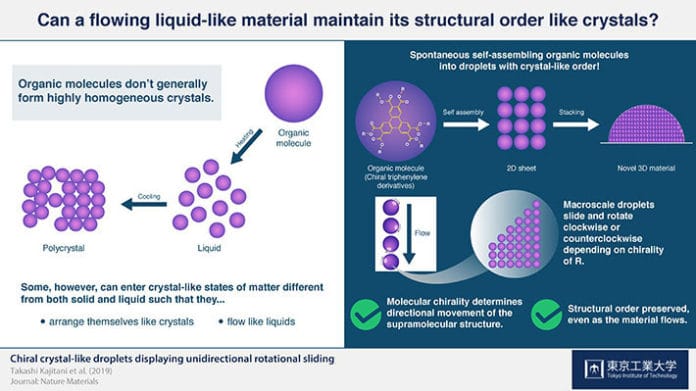Scientists at Tokyo Tech found a chiral compound, which can unexpectedly frame a molecular assembly with an incredibly large single domain structure past a size routine incapable for acknowledging with normal molecular self-assembly.
When heated and left it to cool, this chiral compound gives a droplet featuring a single-crystal-like structure. At the point when the substrate is set up vertically, the droplet displays sliding and pivoting movement constrained by the chirality while saving the single-crystalline structural order.
Through x-ray diffraction techniques, the team determined that the chiral compound spontaneously formed 2D sheets (which look like herringbone fabric) and then stacked themselves into a periodic 3D structure of an ordered crystal.
While the explanation behind this surprising conduct is yet to be uncovered totally, this new material might be fit for self-reestablishing its basic request while sliding in light of the fact that it has both liquid-like and crystal-like properties.
Scientists also found that the chirality of the compound used determines if the rotating-sliding motion is clockwise or counterclockwise.
Professor Takanori Fukushima said, “The fact that this macroscopic movement of the droplets can be controlled by the small point chirality incorporated into the side chains of the molecules is surprising. Materials capable of preserving their structural properties at a long range would be in high demand because they could have potential applications in fields like electronics and optics.”
“The interesting behavior of our molecular assembly extends our fundamental understanding of the structure formation, motility, and phase of soft materials. These findings should be intriguing and inspiring for scientists trying to elucidate the properties of organic materials, thus deepening our understanding of the structural order in soft materials, and in turn, leading to significant advances in nanoscale technologies.”
